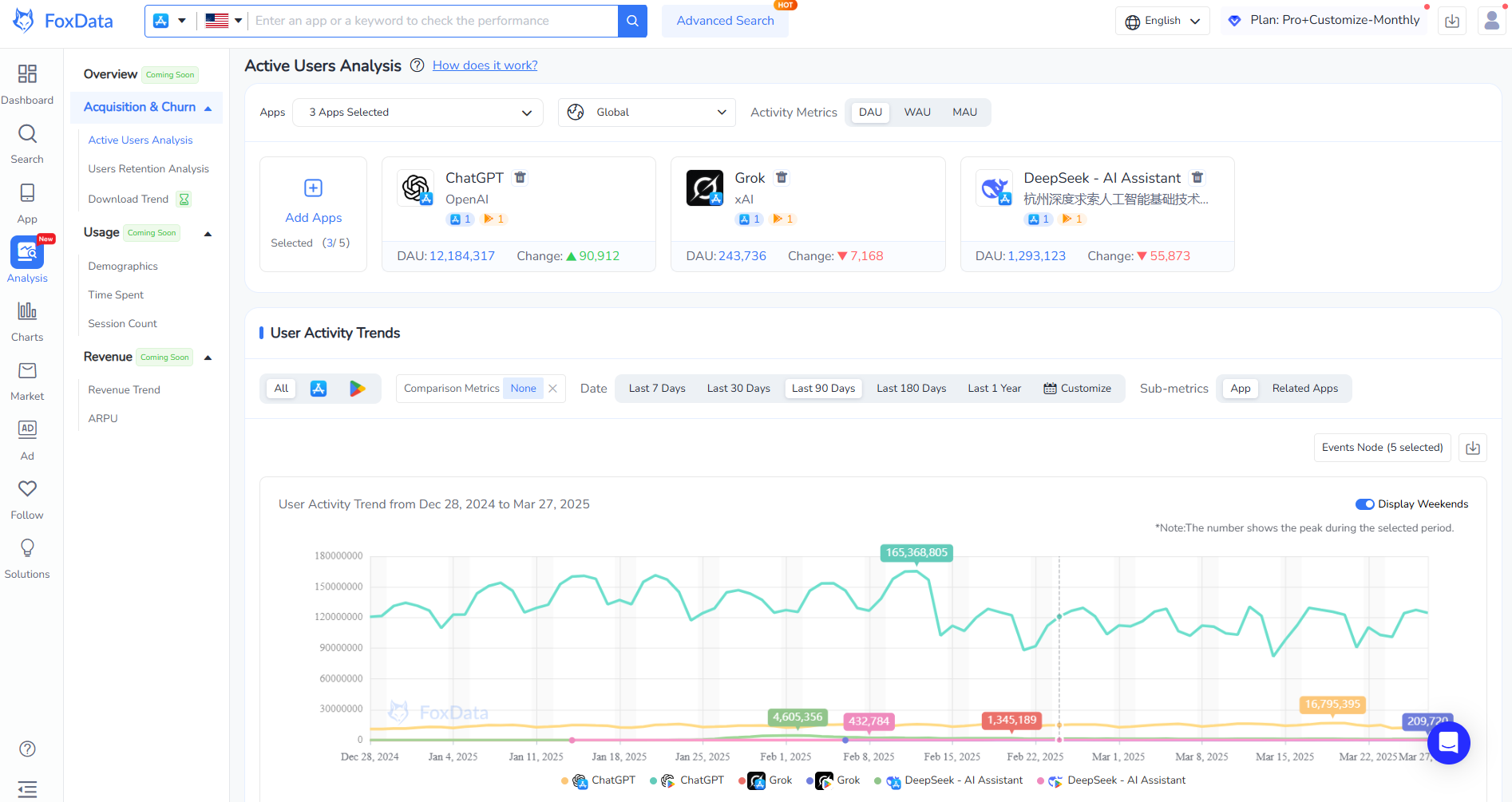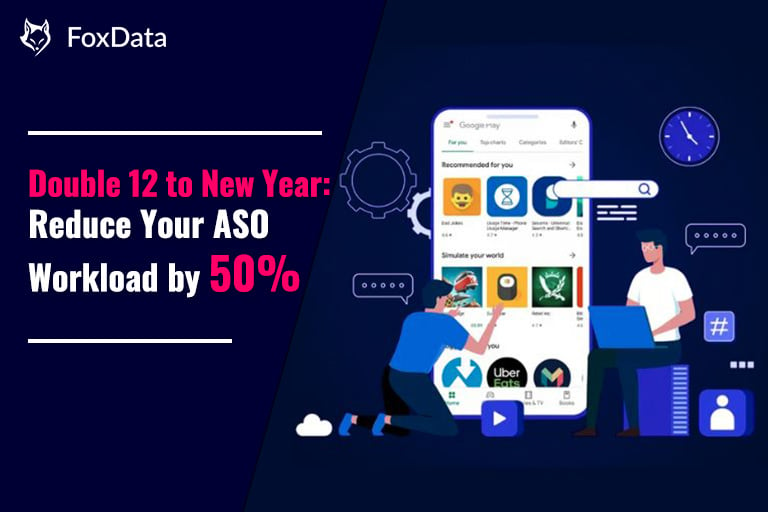How Activity and App Retention Rates Can Benefit App Developers

For app developers, understanding and optimizing user activity and app retention rates is a pathway to sustainable growth, profitability, and user satisfaction. These two interconnected elements provide critical insights into how users engage with an app and how long they stick around, directly impacting revenue, brand loyalty, and development efficiency.
Learn more: Revealing User Behavior and App Retention
In this guide, we’ll explore how focusing on activity and retention can benefit developers, along with strategies on how to utilize and get these metrics to improve the app further.
Why User Activity and Retention Matter And What Does It Means to App Developers?
User activity is measured through metrics like Daily Active Users (DAU), Monthly Active Users (MAU), and session length. It reflects how often and how deeply users engage with an app. Meanwhile, the retention rate is the percentage of users returning after their first interaction, which indicates long-term loyalty. Both of these metrics can be accessed using ASO tools like FoxData. Together, both user activity and retention rate help to form the backbone of an app’s success. Here’s why they’re game-changers for developers:
1. Boosting Revenue and Profitability
Retention directly correlates with revenue. Research shows that retained users generate 37% more revenue than new ones, often through in-app purchases, subscriptions, or ad interactions. For example, acquiring a new user can cost $5.28 per install in North America, while converting them to spend $75 on in-app purchases requires sustained engagement. By increasing activity (e.g., frequent app opens) and retention (e.g., 25% on Day 1, 5.7% on Day 30 as industry averages), developers reduce reliance on costly acquisition campaigns, enhancing profitability.
Learn more: How to Optimize Revenue Growth Through Superior App Retention Strategies
2. Reducing Churn and Acquisition Costs
The average app loses 77% of its DAUs within three days and 90% by 30 days, with acquisition costs soaring 5-25 times higher than retaining existing users. High activity levels, such as a stickiness rate (DAU/MAU) above 20%, signal a compelling user experience that keeps churn low. Focusing resources on improving the app rather than endlessly chasing new installs could save both time and budget for app developers.
3. Enhancing User Lifetime Value (LTV)
Active, retained users contribute to a higher Lifetime Value (LTV), a key metric for long-term success. For instance, users engaging weekly have a 90% chance of becoming long-term users, amplifying their value through consistent activity. This stability allows developers to plan features, updates, and monetization strategies with confidence, knowing their user base is reliable.
4. Driving Organic Growth Through Loyalty
Loyal users don’t just stick around but they also advocate. Studies show that 86% of retained customers recommend apps to others, fueling organic growth via word-of-mouth. High activity and retention rates create a virtuous cycle: engaged users share positive experiences, reducing marketing spend while expanding reach. This is especially impactful in competitive app stores where visibility is king.
5. Informing Development Decisions
Activity and retention data reveal what works and what doesn’t. Long session lengths or frequent returns might indicate a popular feature, while a 95% drop-off by Day 90 could highlight onboarding issues. Developers can use these insights to prioritize updates, fix pain points, and double down on value-driving elements, ensuring resources are spent efficiently.
How Can Activity and Retention Benefit Developers In The Long Term?
Let’s break down the tangible advantages with real-world implications:
|
Benefit |
How Activity Helps |
How Retention Helps |
Developer Impact |
|
Revenue Growth |
Frequent use increases ad views or purchases. |
Loyal users spend more over time. |
Higher ROI on development and marketing. |
|
Cost Efficiency |
Engaged users need less re-acquisition effort. |
Lower churn reduces new user acquisition costs. |
More budget for innovation, less for ads. |
|
User Insights |
Session data shows feature popularity. |
Retention trends highlight long-term appeal. |
Data-driven updates improve app quality. |
|
Brand Strength |
Active users signal a sticky, valuable app. |
Retained users become brand advocates. |
Stronger reputation and organic growth. |
For example, a news app with an 11% 30-day retention rate (above the 5.7% average) likely benefits from frequent user activity, like daily article checks, driving ad revenue. Conversely, a game with a 2.4% retention rate might struggle without strategies to boost engagement, costing developers in lost potential.
Strategies On How To Improve the User Activity and App Retention Rate
Developers can turn these benefits into action with targeted strategies, many of which are amplified by the right tools:
- Personalized Engagement: In-app messages tailored to user behavior can lift retention by 61%-74% within 28 days, compared to 49% for generic ones. This keeps users active and returning. For example, a personalized push notification like “Great job on your 5K run yesterday, Sarah! Ready for a new challenge?”, which is based on the user’s workout history, can help to keep users returning to the app. This method can also be used when doing a retargeting strategy. For example, offering a 10% discount code via in-app messaging to users who abandoned their cart it can help to prompt a return visit within 24 hours.
- Seamless Onboarding: A smooth onboarding process can boost retention by 50%, ensuring users grasp the app’s value early and encouraging frequent use. This could be done by creating an onboarding tutorial or simple tasks to help users build confidence to keep using the app.
- Gamification and Rewards: Offering incentives like virtual currency or exclusive content can increase retention by 30%, motivating consistent activity. For example, by introducing a system where users can earn rewards after completing specific tasks like "logging in", "Making a purchase", etc, daily or weekly.
- Behavioral Analytics: Tracking metrics like session length and drop-off points helps developers refine features, sustaining both activity and retention.
For example, users spend 80% of their time on video content but drop off after 2 minutes. Developers can make changes by testing shorter, snappier clips to extend sessions in their app.
How To Get User Activity and App Retention Rate?
Now that we have learned the importance of user activity and app retention rate, developers still need precise, actionable data. To get these, developers can use ASO tools like FoxData. Here are some of the benefits when using ASO tools like FoxData:
- Advanced Activity Tracking - Monitor DAU, MAU, stickiness rate, and session length in real-time to understand user engagement patterns.
- Retention Rate Insights - Get detailed breakdowns of Day 1, Day 7, and Day 30 retention rates, benchmarked against industry standards, to spot trends and opportunities.
- Behavioral Analytics - Identify drop-off points and high-engagement features with journey analysis, empowering data-driven updates.
- Personalization Features - Integrate targeted in-app messaging campaigns to boost activity and retention, all within the platform.
- Competitive Edge - Compare your app’s metrics to industry averages (e.g., 10.2% for banking, 2.1% for education) to stay ahead.
With ASO tools like FoxData, you’re not just tracking numbers, but you’re also unlocking a roadmap to higher revenue, lower costs, and a loyal user base. Whether you’re refining onboarding or testing gamification, our analytics give you the clarity to act decisively when it comes to user activity and retention rate.
Learn more: How to Leverage FoxData's Active User Analysis for Growth

It is important to note that retention and activity benefits vary by app category, so developers must adapt accordingly. For example, digital banking apps might enjoy a 10.2% 30-day retention rate, driven by daily financial needs, while education apps hover at 2.1%, requiring creative engagement tactics.
However, the ASO tool provides category-specific benchmarks that can help you tailor strategies to your niche. If you are not sure how, talk to our expert today! Visit FoxData for a free trial and take the first step toward building a loyal, engaged user base.
What Can We Learn From User Activity and Retention Rate
For app developers, prioritizing user activity and retention is very important. These metrics can help to drive revenue, cut costs, enhance LTV, and fuel organic growth, all while guiding smarter development choices. By leveraging strategies like personalization and onboarding, as well as using ASO tools like FoxData to get the metrics for user activity and retention rate, developers can improve their app further!






